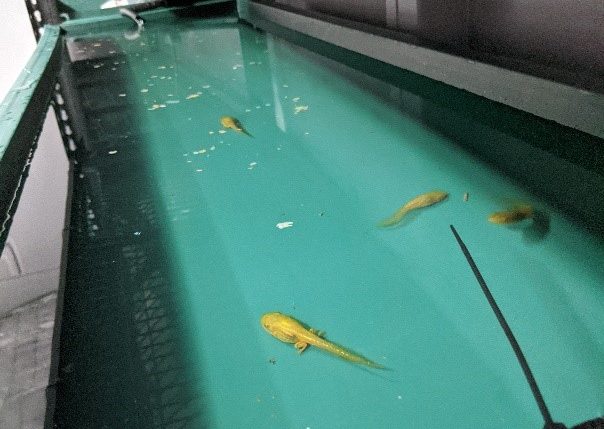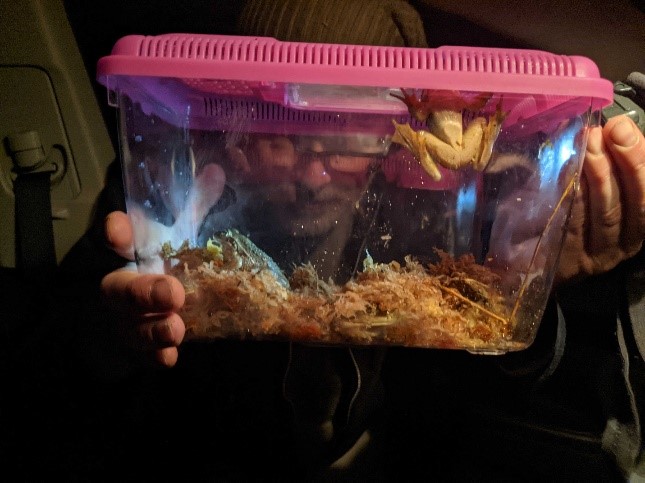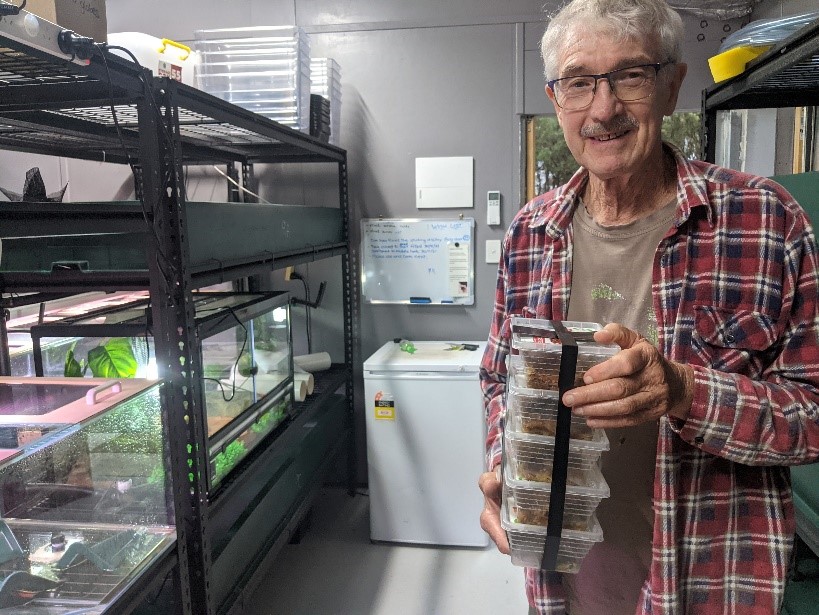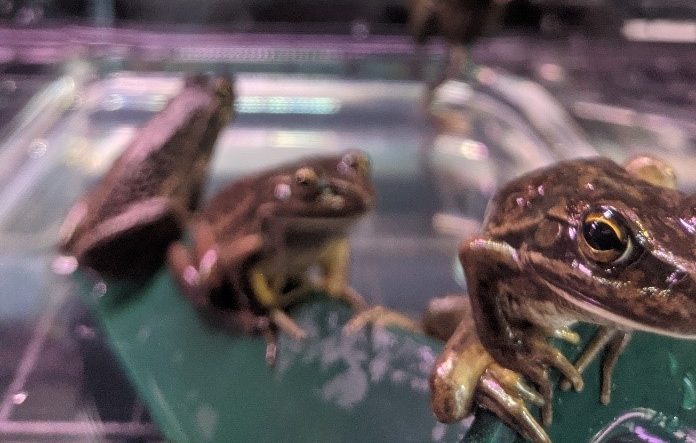New arrivals and a big sleep for our Southern Bell Frogs
NGT’s captive breeding and translocation program for southern bell frogs (Litoria raniformis) has reached another milestone with our 40th adult frog now in captivity! The initiative aims to support the conservation of this nationally endangered frog species through eventual reintroductions at strategic locations around the Lower Lakes, South Australia.
Since the project’s inception we have minimised our impact on wild populations by collecting animals as tadpoles for future use in the breeding program. In the wild, the chance of a southern bell frog tadpole surviving until the end of its first year is approximately 3 in 1,000; however, once we transfer this tadpole to captivity, we can raise this 0.3% survival rate to almost 100%. In this way, we can collect 10 tadpoles which would have almost certainly died and safely grow them into 10 adult frogs.

Although collecting tadpoles rather than mature frogs minimises our ecological footprint, it also introduces a two year delay between collection and their first breeding season. This is further complicated by the very low abundance of these tadpoles in the wild. As such, our annual collection numbers are typically fewer than ten new tadpoles each year. This has made progress frustratingly slow.
Following a very wet summer in the eastern states, some catchments in the Murray-Darling Basin experienced extensive flooding. In the Murrumbidgee River this created a bumper year for southern bell frogs and provided a rare opportunity to collect young adult frogs before nature stepped in and knocked their numbers down.

In April we worked with staff from Charles Sturt University to collect 30 adult frogs from wetlands near Balranald. We were initially worried that we wouldn’t find any frogs but after just one hour of collecting we had filled our quota! All frogs survived the drive to our facility at Clayton Bay and have assumed their position as precious ‘broodstock’. Over time, the next generation of frogs will become available for restocking into their former range in the lower Murray of South Australia. They are probably too young to breed this year, but we are hopeful that next year we will have more tadpoles than we can manage!

Frogs are poikilotherms, which is just a fancy way of saying that they are cold-blooded. This means when the weather is cold, their metabolism slows. This process is called brumation and it is important for their fitness and especially for breeding cycles. In the breeding facility, we stop heating the tanks and do not feed for two months over winter! During this time the frogs do not lose any weight and do not seem to suffer any ill-effects from this slow-down phase. If this seems extreme, similar programs at Melbourne University for green and golden bell frogs (Litoria aurea) do not feed their frogs for four months over winter!
We hope that this process will prime our animals for breeding in spring. Until then, sleep well little frogs!

